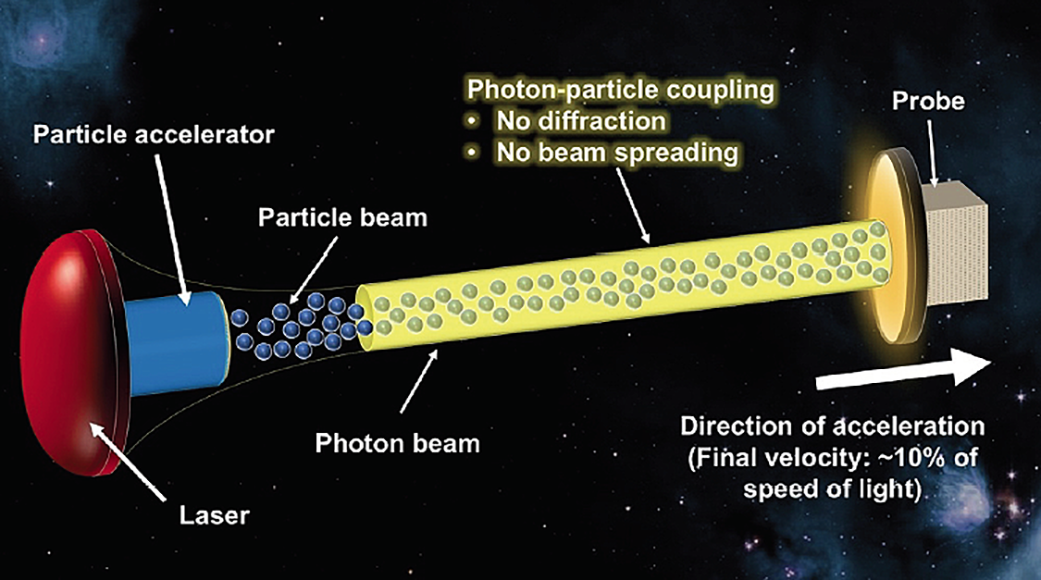Chris Limbach
Texas A&M Engineering Experiment Station
We propose a new and innovative beamed propulsion architecture that enables an interstellar mission to Proxima Centauri with a 42-year cruise duration at 10% the speed of light. This architecture dramatically increases the distance over which the spacecraft is accelerated (compared with laser propulsion) while simultaneously reducing the beam size at the transmitter and probe from 10s of kilometers to less than 10 meters. These advantages translate into increased velocity change (delta-V) and payload mass compared with laser propulsion alone. While primarily geared toward interstellar missions, our propulsion architecture also enables rapid travel to destinations such as Oort cloud objects and the solar gravitational lens at 500 AU.
The key innovation of our propulsion concept is the application of a combined neutral particle beam and laser beam in such a way that neither spreads or diffracts as the beam propagates. The elimination of both diffraction and thermal spreading is achieved by tailoring the mutual interaction of the laser and particle beams so that (1) refractive index variations produced by the particle beam generate a waveguide effect (thereby eliminating laser diffraction) and (2) the particle beam is trapped in regions of high electric field strength near the center of the laser beam. By exploiting these phenomena simultaneously, we can produce a combined beam that propagates with a constant spatial profile, also known as a soliton. We have thus named the proposed architecture PROCSIMA: Photon-paRticle Optically Coupled Soliton Interstellar Mission Accelerator. Compared with a diffracting laser beam, the PROCSIMA architecture increases the probe acceleration distance by a factor of ~10,000, enabling a payload capability of 1 kg for the 42-year mission to Proxima Centauri.
The PROCSIMA architecture leverages recent technological advancements in both high-energy laser systems and high-energy neutral particle beams. The former has been investigated extensively by Lubin in the context of conventional laser propulsion, and we assume a similar 50 GW high-energy laser capability for PROCSIMA. Neutral beam technology is also under development, primarily by the nuclear fusion community, for diagnostics and heating of magnetically confined fusion plasmas. By combining known physics with emerging laser and neutral beam technologies, the PROCSIMA architecture creates a breakthrough payload capability for relativistic interstellar missions. l






























